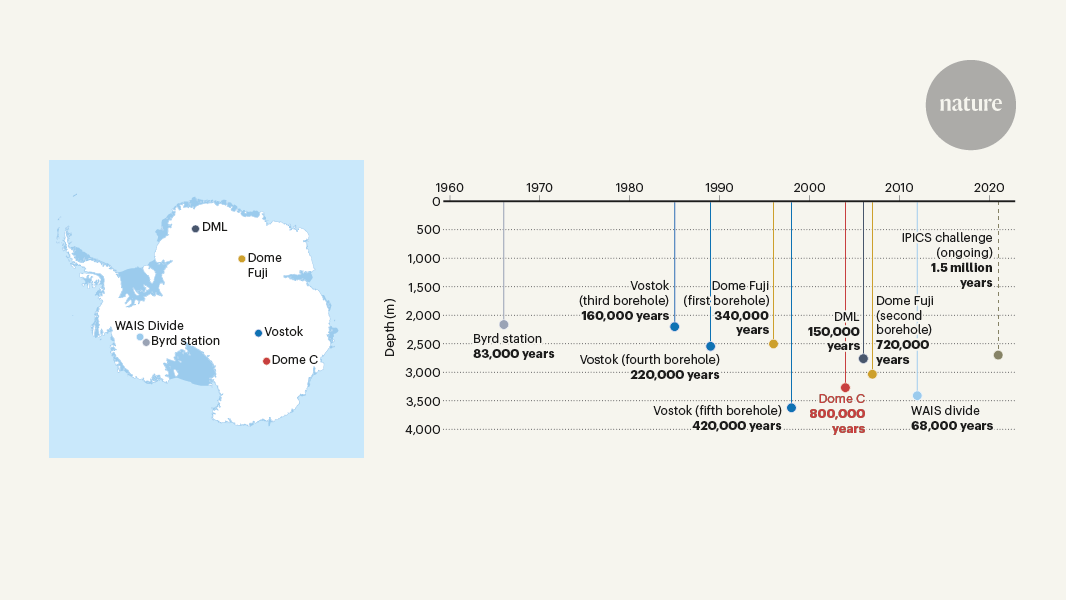Pioneering Antarctic Ice Core Research Reveals Insights into Earth's Climatic History over the Past 740,000 Years
The content describes the pioneering work of the European Project for Ice Coring in Antarctica (EPICA), which successfully extracted ice cores from Antarctica that were up to 740,000 years old - the oldest ice ever obtained from the continent. This was a significant achievement, as the ice cores allowed researchers to study the atmospheric temperature, dust content, carbon dioxide, and methane levels over the past eight glacial-interglacial cycles.
The study of these ice cores has provided valuable insights into the fundamental drivers and interactions of climatic changes, and how the past can inform our understanding of current and potential future climate shifts. The ice core data revealed changes in greenhouse gas concentrations that accompanied the melting of continental ice sheets in the Northern Hemisphere around 430,000 years ago. This information has helped scientists better comprehend the complex relationship between climate and environmental factors.
The content highlights how this pioneering ice core research has been instrumental in advancing our knowledge of Earth's climatic history and the factors that influence global climate patterns over extended time periods. The findings from the EPICA project and subsequent studies inspired by it have been crucial in informing our understanding of past, present, and future climate dynamics.
Customize Summary
Rewrite with AI
Generate Citations
Translate Source
To Another Language
Generate MindMap
from source content
Visit Source
www.nature.com
Two decades of deep ice cores from Antarctica
Key Insights Distilled From
by Kenji Kawamu... at www.nature.com 06-10-2024
https://www.nature.com/articles/d41586-024-01507-5
Deeper Inquiries
